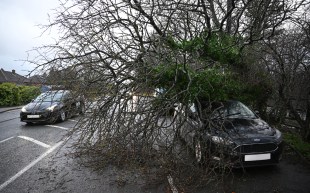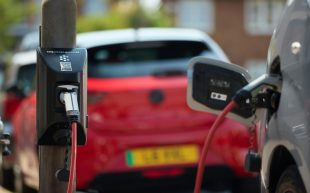Fine mess: five mistakes drivers make when followed by an emergency vehicle
Stay on the right side of the law
WHAT driver doesn’t want to do their bit and allow an emergency services vehicle to pass? Most will go out of their way to help speed the journey of an ambulance, fire engine or police vehicle. Unfortunately, some motorists aren’t aware that making way for a vehicle with flashing blue lights and wailing siren doesn’t excuse them from everyday rules and regulations of the road.
All manner of penalties await the unwary who are just trying to help the journey of an ambulance, fire engine or police vehicle. From bus lane penalties to yellow box junction fines, doing good could cost drivers dear when the maximum fine for running a red light is £1,000 and three penalty points.
So what are the mistakes that drivers may make when moving out of the way of approaching emergency vehicles? Below, we share five of the most common.
For further tips and advice on dealing with emergency vehicles, watch the video above from GEM Road Safety Charity for its Blue Light Aware campaign, launched last week and produced in association with Sussex Police, South East Coast Ambulance, West Sussex Fire and Rescue, Devon and Somerset Fire, Devon and Cornwall Police and South Western Ambulance.
Browse NEW or USED cars for sale
Five common mistakes drivers make when being passed by emergency vehicles
1 Driving in a bus lane
Making way for an emergency vehicle is all well and good, but the local restrictions around a bus lane still apply. So if you weren’t meant to be driving in it at the time of the offence, you could receive a penalty. However, drivers who pull into the bus lane and stop their vehicle, before proceeding once the emergency vehicle has passed, stand a better chance of not being prosecuted.
2 Running a red light
Unless directed by a uniformed police officer, you may not pass a red traffic light to allow an emergency vehicle to pass. The requirement is for the emergency vehicle to find its way through or around other traffic, which is why they can often be seen crossing onto the other side of the road to negotiate a junction with traffic lights. If surrounding traffic is unable to make progress, the emergency vehicle will often switch off its siren.
3 Entering a yellow box junction
The Highway Code states that drivers must not enter a yellow box junction unless their exit road or lane is clear. The exception is when turning right and waiting for oncoming traffic to pass.
4 Exceeding the speed limit
Just because there is an emergency vehicle approaching your car doesn’t mean you can accelerate beyond the speed limit to help make fast progress, such as when you can see a lay-by in the road ahead and wish to get there as swiftly as possible to pull off the road.
5 Pulling onto a pavement
The Highway Code says: “Do not endanger yourself, other road users or pedestrians and avoid mounting the kerb” which isn’t particularly informative. In London, parking on the kerb is banned, so it risks a fine. Elsewhere, pulling up onto the kerb where restrictions are in place, such as a red route or double yellow lines, could earn drivers a penalty.
Appealing against a penalty for letting an emergency vehicle pass
A survey of 18,000 AA members in 2015 revealed drivers will risk fines in order to make way for the emergency services: 48% of drivers would happily run a red light, 31% would be willing to exceed the speed limit and only 13% would refuse to enter a yellow box junction to allow rescue services past.
Fortunately, it is possible to overturn councils’ decision to fine drivers for these types of offences. Motorists who feel they have been unfairly penalised after letting an emergency vehicle pass can lodge an appeal against the relevant local authority.
In 2013, Doctor Catherine Berry, a lecturer in cell engineering, received a £60 fine after pulling into a bus lane in Glasgow, to make way for two fire engines. She was caught on camera, and despite writing to contest the fine, the council refused to reverse its decision.
With the backing of the Fire Brigades Union, Dr Berry appealed against the decision by Glasgow City Council. Eight months after the original penalty was issued, the council agreed to waive the penalty.
A spokesman for the council said: “The driver in this instance was clearly in the wrong as she continued to drive along the bus lane instead of pulling over and stopping to allow the emergency vehicle to pass.
“By pulling into the bus lane, and continuing to drive along it despite emergency vehicles approaching behind her, she could have created an obstacle for them. We are cancelling the fine on this occasion but remind drivers to use common sense and observe the laws of the road.”
Instructions for appealing a fine will be provided on the original penalty notice documents sent to drivers.




